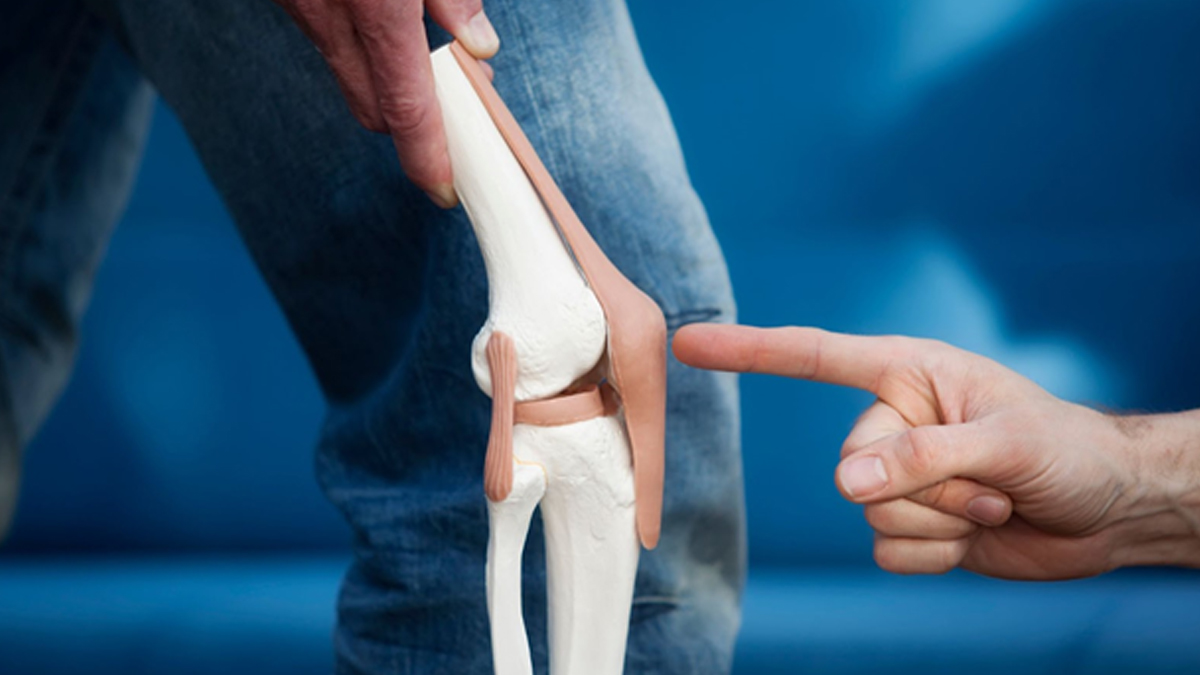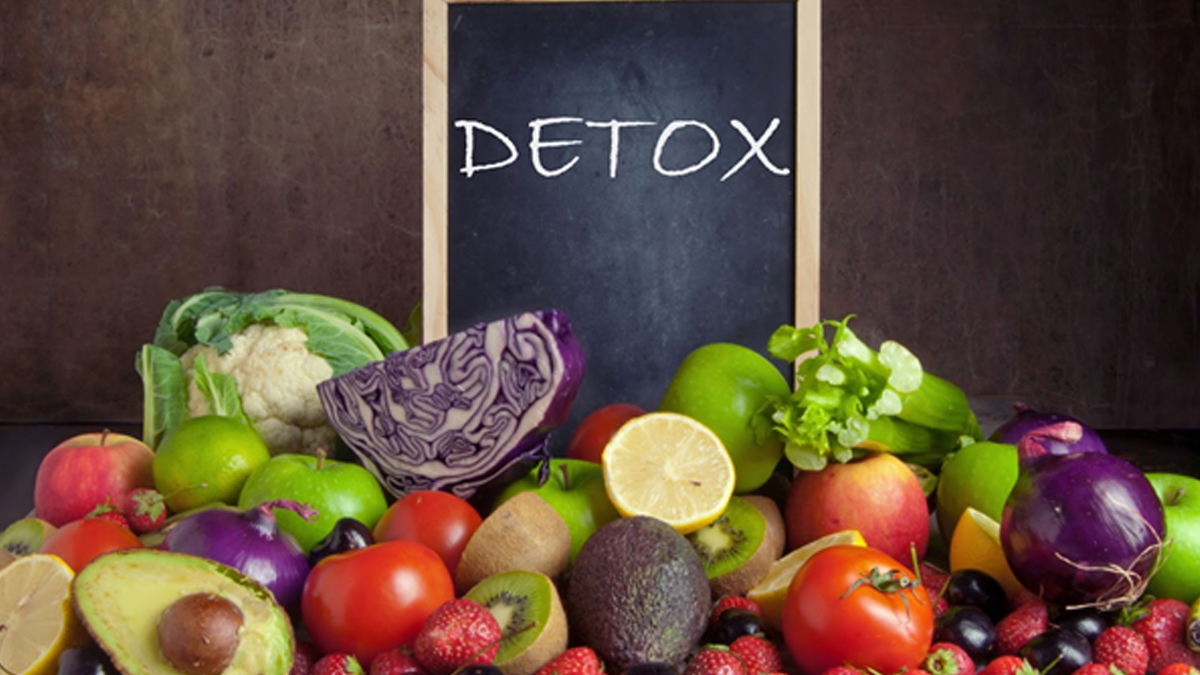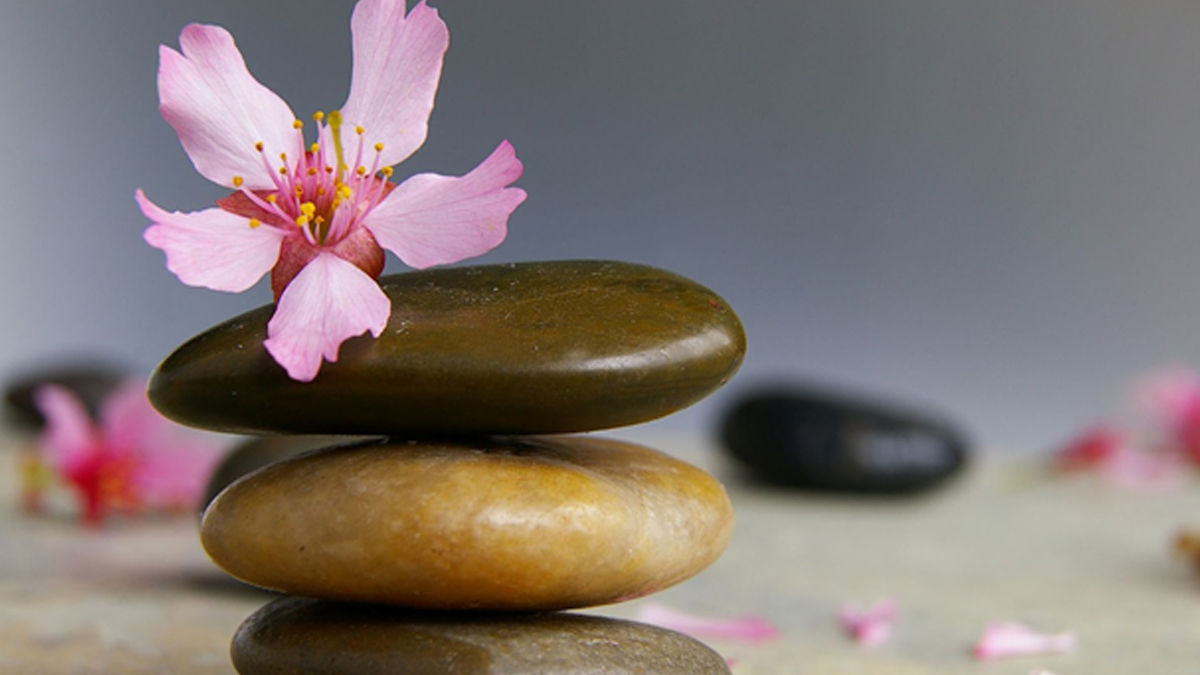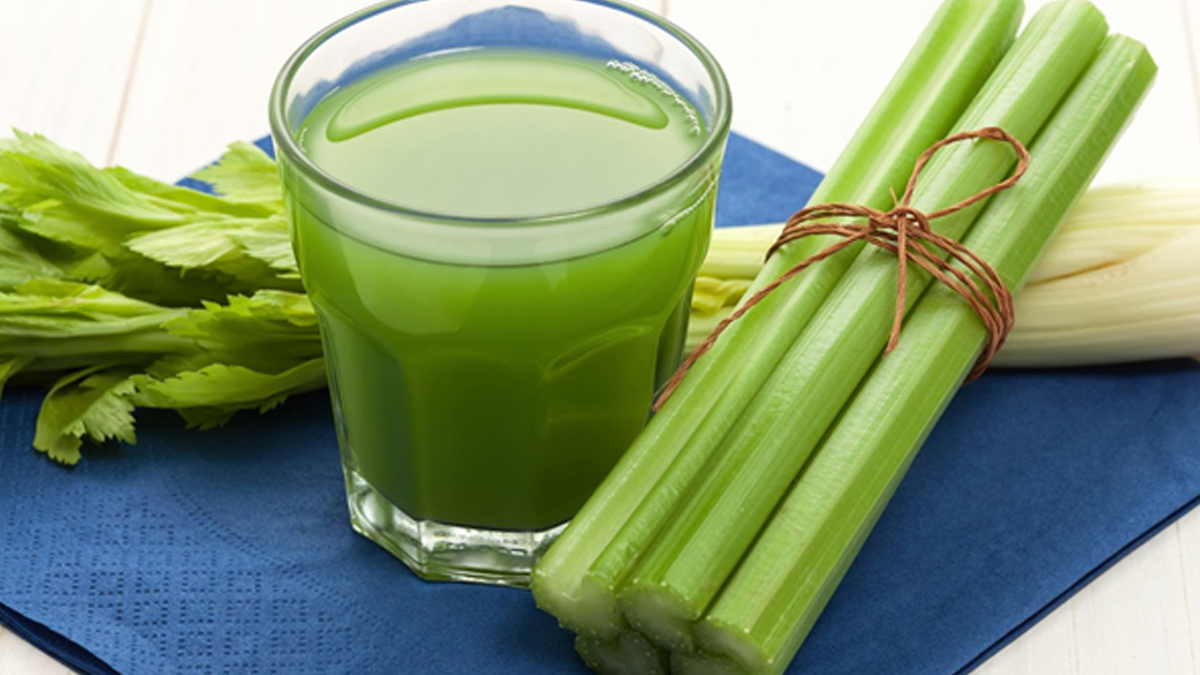Joint Detox – What Is It and More Importantly Why You Need One!

Do we move in three dimensions? Even though we live in a 3D world and might think so, our joints are constrained to 2D movements (two dimensions) unless we use a medium to travel from one point to another (for example, boarding a plane to go from one place to another). We have evolved in a way that our joints cannot produce a full rotating motion, which could have made us “true 3D creatures.” But still, joints are fascinating. They help us carry out tasks that other living creatures would find challenging. In this article we will discuss the joints, their function, what causes joint issues, as well as how to perform joint detoxification.
Joint – What Is It and Its Function?

A joint is not an organ, per se, but a place where two or more bones meet together. The primary function of a joint is to provide our entire skeletal structure with the flexibility to make different movements. In addition to helping us to move, the joints also ensure the stability of our body.
Joints are classified based on their structure and function. Here are 3 main types of joints:
- Cartilaginous – type of joint where the bones are entirely joined by cartilage. These joints are semi to non-mobile, and there is no cavity between the two bones of the joint. Cartilaginous bones are more mobile than fibrous, but less mobile than synovial. Examples: disks between spinal vertebrae and the joint connecting the right and left pubic bones. Additionally, femur and humerus also belong to this type of joint.
- Synovial –the most common type of joint in the human body. Unlike the cartilaginous, these joints are diorthotic, meaning offering free movement. Different types of Synovial can be seen throughout the body. Examples include ball and socket joints in the hips and shoulders, the thumb joint (saddle-like structure), finger joints, and knees and elbows joints.
- Fibrous – consists of collagen fibres that hold two or more bones together. This type of joint can be found in the skull, as well as the lower and upper jaw. This joint is unique in that, at first (during the child’s growth), it is flexible and provides room for growth. Once the growth stage is over, the joint becomes hardened and non-mobile.
A joint’s structure is a complex network comprising various elements responsible for withstanding internal and external stress or strain. There are approximately 360 joints in the human body.

A joint is not an organ, per se, but a place where two or more bones meet together. The primary function of a joint is to provide our entire skeletal structure with the flexibility to make different movements. In addition to helping us to move, the joints also ensure the stability of our body.
The type of joints called hinge joints can be particularly complex due to the number of elements in the collaborative network. For example, a knee joint is a hinge joint. The knee consists of three major parts, the femur (thigh bone), tibia (shin bone), and fibula (small side bone located on outer side of your leg). The knee cap (patella) slides over the front side of the lower part of the femur. The three bones (femur, tibia and fibula) are attached to each other by ligaments and tendons. And all three bones are housed in something known as the joint capsule, or synovium. The synovium is covered with a cushion-like membrane known as cartilage. The role of the cartilage is to prevent damage between bones caused by friction.
The synovial membrane creates lining of the joint and seals it in the joint capsule. The main function of the synovial membrane is to secrete synovial fluid, which helps to lubricate the joint to avoid friction-related damage.
Last but not least, your joint structure includes bursas. The synovial fluid-filled sac is positioned between the bones and ligaments. The main function of bursas is cushioning the joint to resist friction.

What Affects Joints? – Joint Disorders and Symptoms

Joint conditions may be caused by infections, injuries and due to overuse of the joints. For example, repetitive running or other competitive sports movements may cause issues in specific joints. One challenge with joint issues is that the degeneration in them may develop slowly and, therefore go unnoticed until it is in a quite advanced stage. It is difficult to repair a joint that has deteriorated.
The most common issues with joints:
- Osteoarthritis – Arthritis simply means joint inflammation. Probably the most common joint disorder marked by pain and swelling in the affected areas. This condition may be related to the accumulation of uric acid and other toxins in the joint. If not addressed early, osteoarthritis can lead to severe joint damage and be unrepairable.
- Autoimmune-related joint conditions, such as Rheumatoid Arthritis, Ankylosing Spondylitis and Sjögren Syndrome
- Rheumatoid Arthritis – it is believed that this condition is caused by your immune system “attacking” of the joints. RA typically affects multiple joints at once. The symptoms of RA are similar to Osteoarthritis.
- Ankylosing spondylitis is a condition in which the joints and ligaments and tissues around the spine are chronically over time, which overtime leads to their stiffness and fusion, and immobility.
- Sjögren in an autoimmune disease mainly affects the gland responsible for producing moisture in the human system. The most common symptoms are dry eyes, mouth, and joint pain.
Apart the degenerative conditions, listed above, joint disorders may also be caused by mechanical causes, such as dislocation, sprains, and stress on the joint.
- Sprain and Stress – A sprain is often the result of stretched or torn ligaments, which happens if you suddenly lift a heavy object due to using improper technique or not stretching prior.
- Dislocation – When a bone(s) is pushed or pulled out of its natural position, it creates a gap between the tissue and the bone itself. Dislocation can cause swelling, numbness, and pain in the affected area.
- Chronic Strain –due to the torn muscles from repetitive heavy work over some time.
- Tendonitis – Caused by damage of tendons from overuse. When tendons are damaged, the joints in the affected are swell and experience pain.
How does a joint deteriorate?
The main causes of joint deterioration are injuries, accumulation of toxins, and dehydration. Cartilage mainly consists of 80% of water content. The remaining 20% is dry and made of collagen and proteoglycan proteins. An injury can create improper protein deposition in the joint, which may lead to joint damage by sharp and irregular bone formations.

Why healthy nutrition is so important for joint health?
Lack of warming up the joints before exercise and stretching after may over time lead to their damage. And the most damage the joint may experience if you do not provide your body with quality nutrients, especially if you exercise regularly, which increases the need for quality nutrients. Undernourished joints and cartilage become fragile, wear out, and become prone to inflammation. Quality protein and essential fatty acids are essential for your bone health, but also are other nutrients. So “rewarding” yourself after exercise with a pizza or a chocolate does more bad than good. The impact is worse after the exercise, because this is what your body will “incorporate” into your joints and surrounding tissues, due to temporarily increased metabolism and absorption in those areas.
Can toxins cause joint disorders?
Certainly, yes. According to the research conducted in 2021, Aluminium (Al), Cadmium (Cd), Arsenic (Ar), and Lead (Pb) concentration may have a significant adverse effect on the knee and other joints in the human body. It also states that bone is the primary location where such toxins have a tendency to accumulate. The research concludes that extensive exposure to heavy metals/environmental pollutants is a major contributing factor to developing joint disorders. It majorly disrupts bone metabolism due to heavy metals’ ability to replace essential elements.
What are some additional contributing factors to the development of joint disorders?
Excess salt and protein can cause joint deterioration over time. Excess sodium, the primary component of table salt, makes the cells retain excess water, which in turn may cause swelling and inflammation of the joints. Protein has a similar effect. Additionally, high animal fat content in your diet may cause aggravation of joint pain (arthritis).
Do Joints Cleanse Themselves? If So, How Does the Joint Cleanse Work Naturally?

Yes, absolutely, joints have a self-cleansing ability. They do it via the synovial membrane and cartilage. As mentioned above, the synovial membrane is responsible for secreting synovial fluid, which helps lubricate the joints to avoid frictional damage.
Synovial fluid is also responsible for providing nutrients and removal of any metabolic by-products in the cartilage (which has more water content than most of the tissues, almost 80% of the tissue is water content). Bacteria and other impurities are removed from the joint by phagocytes, a type of WBC (white blood cells).
The parts that connect the joints are “bathed” by the synovial fluid. The blood capillaries, surrounding the joint, provide it with oxygen and other nutrients. The carbon dioxide and other metabolic waste are removed through capillaries to the veins.
How to Detox Your Joints Naturally?
First and foremost, we cannot fully prevent injuries due to external causes, which can cause arthritis, but we can do what we can to ensure we get the best healthy joint for a long time. The following things can help maintain our joints’ good health:
- Alkalize Your Body


- Exercise Regularly and Correctly
Replace Evening TV with a 15 min Run. When you move, your synovial fluid becomes less viscous. When you do not move, the synovial fluid becomes thick and decreases in volume, so your joints will not have a protective barrier from wear and tear.
Exercise correctly. Warming up before you exercise will stimulate the production and release of synovial fluid, which is a preventative measure to avoid joint damage.
Do Stretching Regularly – many people who enjoy cardio and weights do not do sufficient stretching after. This makes their joints and muscles prone to injury. If you do fitness three times a week, replace one with yoga. It may seem boring initially, but you’ll quickly see the health benefits.
Avoid repetitive movements when exercising. Training with a qualified instructor and getting into a proper position (quality vs quantity approach) will prevent a lot of joint issues in the future.
3. Lubricate Your Joints

Drink 2 lit water daily.
Use extravirgin coconut oil, shea butter or other natural creams after shower. It is also very helpful to nourish your joints with it before and after exercising.
Obesity is one of the most common, and at the same time, most crucial factors for joint disorders. Weight-bearing joints, such as the knee, elbow, and back joints are much more prone to joint disorders due to being overweight. Professionals say that the 1:4 ratio measures how much strain is caused to weight-bearing joints. For example, for every pound of body weight (0.45kg), the joints experience four times that weight (4X0.45=1.8kg). Maintaining a proper weight based on height and age can considerably reduce the risk of contracting joint disorders.
4.Look at Your Gut Health

It has been well known that gut health and joints are interconnected. Some people may experience joint pain when they eat specific foods that are triggering. Inflammatory conditions and imbalance in gut microflora may be a culprit of joint inflammation. Please take this into consideration, if you are prone to joint conditions. Diet, high in conventional foods, particularly, gluten and non-organic wheat consumption, may negatively impact your gut and joint health.
Holistic Methods Used for Joint Detoxification
Advanced Joint Cleanses require a prior colon, liver, blood and lymph cleanse. However, it is fairly safe to do simple joint cleanses.
However, simple detoxification of your joints can be done at your home without any difficulties. Below you will find 3 simple methods of home joint detox.

Simple Home Cleanses
Cleanse #1 Celery Juice

A common treatment for osteoporosis is prescription of supplementary calcium. Short term, it may be ok, but in most cases the calcium used in supplements is in its “inorganic” or difficult-o-absorb form. Long-term supplementation with such calcium may lead to formation of calcium deposits, such as kidney stones. This calcium also may form spurs. Spurs are calcium deposits in the wrong places on bones and joints. One of the best agents to clear inorganic calcium deposits is sodium. Celery is one of the richest sources of sodium, which will be used in the following cleanse.
How to:
Make some fresh celery juice (can add some tart apple juice for flavor) in a juicer. Most juicers will work for it.
Amounts and Length:
Drink 2 cups per day for 2 weeks. Remember to hydrate properly during the cleanse. If you have any side effects, decrease the juice amount or discontinue.
Cleanse #2 Foot Clay Wrap

This simple yet effective home detoxification procedure may be help you in joint detoxification.
How to:
STEP 1 – Start the detoxification process by taking a hot foot bath with Epsom or sea salt. If you’d like to go deeper, find some nettle herb and make a foot soak by steeping it for 15-20 min and straining (2 cups per 2 quart jar).
STEP 2 – You will need a small amount of bentonite clay or other quality medicinal clay. This type of clay helps you to draw toxins out of the body thanks to the negatively charged particles contained in it. Make a thick poultice by ADDING clay to a half a bowl of warm water (if you do it vice versa, and start with clay and add the water after, it will clump – so start with water). Optionally, you may use green tea or ginger tea instead of water, further activate detoxification process.
Unlike in the picture above, you do not need to use the clay on the bottom of your foot (unless you want to do it, if may create) and rather cover with it the rest of the lower part of your leg, up to the knee. You will need some towels or a plastic basin to put your foot on. It is a messy process, but you can minimize it by carefully thinking through.
STEP 4 – Use plastic wrap to keep the poultice in place and let the clay for 15-30 minutes. Cover the joint with a warm towel to enhance the action of the clay. The poultice time may vary, but most importantly, keep it moist. After the clay dries out, it’s beneficial action stops.
STEP 5 – Remove poultice and apply some coconut oil. This oil has anti-inflammatory properties and will rehydrate your skin. Dispose clay properly, to prevent clogging of your sewer system. Through it into garbage, not down the drain.
NOTE: If you have blood vessels issue, consult with your physician before attempting this procedure.
Variations:
This wrap can be done for hands, if they are affected by arthritis. It may be a good idea to focus on one area and do multiple sessions on it, rather than rotate various joints.
The wrap can be done for the full body and preceded by an infrared sauna or a full body hot shower or bath. However, full body clay wrap is contraindicated to people with thyroid issues and vascular conditions. You also need to be careful if you smoke or recently quit, because it impacts your blood vessels. In case of vascular conditions, you may experience some unexpected bruising or small capillaries breakage, due to a weakened capillary wall.

MSM is one of the most wonderful supplements for your bones and joints. Thanks to its rich in organic sulphur, which is good for reducing inflammation and swelling. Additionally, it is shown to improve collagen production and provides some extra glucosamine, both of which are crucial for healthy bones and joints. Additionally, MSM helps your immune system through the enhancement of the production of immunoglobulins. Onion, garlic, ginger, broccoli and kale are MSM-rich foods. However, the most effective way to get MSM in its concentrated form is as a nutritional supplement.
Frequently Asked Questions
Yes, ginger, onion, garlic, broccoli, and kale are MSM-rich foods you can include to detoxify your body.
Research conducted in 2021 found that Aluminium (Al), Cadmium (Cd), Arsenic (Ar), and lead concentration have significant effects on the knees and other joints in the human body.
The most common signs are as follows:
- Stiffness
- Sound in joints when you move your body
- Pain in joints
- Restrains in your movement without any previous injury
Conclusion
Joints are part of our body that is over-overlooked and may cause a lot of grief, if not nourished and cleansed regularly. Proper methods of exercise, joint lubrication and nourishment, as well as timely detoxification, may prevent many joint issues.
At Fresh Start, we strive to provide first-class holistic detox retreats. All the therapies are tailored to enhance the detoxification process. If you are interested in completing an effective joint cleanse in a retreat setting, please feel free to contact us here, or call us at 1-888-658-3324.
